 Now in its 25th year, the annual “What’s Hot and What’s Not in the Legal Profession” report from Robert Denney Associates presents a 30,000-foot view of developments in the legal world.
Now in its 25th year, the annual “What’s Hot and What’s Not in the Legal Profession” report from Robert Denney Associates presents a 30,000-foot view of developments in the legal world.
For the report, the Wayne, Pa.-based strategic planning and consulting firm gathers information from surveys, clients, discussions with law firms’ management, and other leaders in the legal profession. The report was released in December 2013 and is the subject of Robert Denney’s article, “National and Global Practice Trends 2014: What’s Hot, What’s Not,” at page 16 of this issue.
“I hope people will go through the report and pick out pieces that will help to make their practice more successful and therefore their work more rewarding, whether they practice law or are legal administrators, marketers, or what have you,” says Denney.
As for a general sense of what lies ahead, the report states that the legal profession “is in a state of flux and will continue to be so, not just in 2014, but for years to come.”
Here we’ll highlight a few of the report’s findings and also present thoughts from others, from both inside and outside the state, about what these findings may mean for Wisconsin attorneys.
Hot Practice Areas
 John Behling, Weld, Riley, Prenn & Ricci S.C., Eau Claire: The pace of real estate transactions and permit applications as a result of increased sand mining is almost unfathomable.
John Behling, Weld, Riley, Prenn & Ricci S.C., Eau Claire: The pace of real estate transactions and permit applications as a result of increased sand mining is almost unfathomable.
A few of the practice areas with high levels of activity include the following:
Energy
Denney’s report cites energy as a “red hot” law practice area, and attorney John Behling couldn’t agree more. “I have never seen it this hot before. My exclusive practice right now is sand mining. It’s almost unfathomable – the pace of real estate transactions and permit applications,” says Behling of Weld, Riley, Prenn & Ricci S.C., Eau Claire.
He doesn’t see the pace slowing any time soon. More than 100 permitted frac sand mining sites already have sprouted in Wisconsin in the last three years, mostly in the western and central parts of the state. By contrast, Minnesota has only about a dozen permitted sites and is weighing a statewide moratorium while assessing environmental impacts.
“You have one state saying we’re not so sure about the future of sand mining,” Behling says, “and you have another saying we’re open for business. So you see more of an impact in Wisconsin” because of what’s happening in Minnesota.
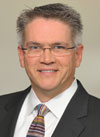 Daniel Gustafson, Weld, Riley, Prenn & Ricci S.C., Eau Claire: Energy entities of various types will continue to need advice and regulatory help, although renewable energy activity has slowed.
Daniel Gustafson, Weld, Riley, Prenn & Ricci S.C., Eau Claire: Energy entities of various types will continue to need advice and regulatory help, although renewable energy activity has slowed.
Lawsuits also have emerged, especially in the past year, in several Wisconsin counties as local governments seek to control frac sand mining. Senate Bill 349, still pending, seeks to limit local regulation.
As for other energy law issues, energy entities of various types will continue to need advice and regulatory help, says Daniel Gustafson, also of Weld, Riley, Prenn & Ricci. Recent years saw a boom of activity in renewable energy. “That’s slowed down,” Gustafson says. “Most utilities in the state have met their renewable portfolio standard requirements going forward for the next several years.”
Health Care
Health care law also ranks on Denney’s list of “red hot” practice areas. While health care law has been a strong area for some years due to ever-changing regulations, “now change is happening at rocket speed with the Affordable Care Act,” says Madison attorney Sarah Edelman Coyne of Quarles & Brady LLP.
 Sarah Edelman Coyne, Quarles & Brady LLP, Madison: Change in health care law is happening at rocket speed with the Affordable Care Act.
Sarah Edelman Coyne, Quarles & Brady LLP, Madison: Change in health care law is happening at rocket speed with the Affordable Care Act.
In addition, health care entities are undergoing tougher scrutiny for regulatory compliance, and they face more aggressive measures from the government in recovering dollars. “All that results in a lot of activity in the health care industry,” Coyne says, “and in health law practice, as well.”
Meanwhile, health care entities are struggling with cuts in government reimbursements for care provided, and that means ever-tighter budgets. “They’re cutting, cutting, cutting anywhere they can,” Coyne says, “including their legal spend.” Many also are expanding their in-house legal departments to reduce use of outside counsel.
While alternative fee arrangements have gotten “a lot of lip service over the years,” Coyne says such arrangements increasingly become a necessity for any firm serving health care clients, who “absolutely need predictability and transparency in their legal spend,” she says, “given the extreme hit they’re taking on reimbursements.”
Labor and Employment
Denney’s report puts labor and employment law on the “hot” list, and Madison attorney C. Wade Harrison of Godfrey & Kahn S.C. says that’s an apt description in Wisconsin, too, for various reasons.
“I don’t think anybody could have predicted how disruptive the passing of Act 10 (Budget Repair Bill) and Act 32 (Biennial Budget Bill, 2009-2011) would be,” he says, “in large part due to continuing litigation we’ve had.” The laws effectively eliminated collective bargaining for public employees in Wisconsin.
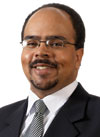 C. Wade Harrison, Godfrey & Kahn S.C., Madison: Nobody could have predicted how disruptive the passing of Act 10 and Act 32 would be in labor and employment issues, in large part due to continuing litigation.
C. Wade Harrison, Godfrey & Kahn S.C., Madison: Nobody could have predicted how disruptive the passing of Act 10 and Act 32 would be in labor and employment issues, in large part due to continuing litigation.
Another result after passage of those laws was that many long-time state employees left their jobs, which led to a “brain drain,” Harrison says, in agencies that deal with employment issues. “It takes time and expense to train new people,” he explains.
Another element having a huge impact in the employment world is social media, Harrison says. For instance, section 7 of the National Labor Relations Act protects “water-cooler talk” in the workplace – that is, employees discussing gripes and desired changes related to their jobs.
“What has happened is that a lot of water-cooler talk has now transferred over to Facebook and other public venues,” Harrison says. “Some employers react by trying to come down on that behavior.”
Other social media issues arise, as well. Take, for example, the question of an employee who takes paid leave for a disability but then posts pictures on her Facebook page that clearly show she’s not disabled. Or the issue of employers asking new hires for their social media log-in information, which normally would be regarded as overreaching on the employers’ part. But what if the employer is a prison trying to ensure it doesn’t hire guards who are gang members?
Such situations and legal quandaries are just the tip of the iceberg. “We’re seeing all sorts of interesting developments,” Harrison says. “Social media issues will be hot for a long time to come.”
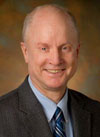 Benjamin Adams, Adams & Woodrow S.C., Neenah: Elder law saw a tumultuous year with significant changes passed in Act 20 then repealed six months later in another bill, creating confusion and uncertainty.
Benjamin Adams, Adams & Woodrow S.C., Neenah: Elder law saw a tumultuous year with significant changes passed in Act 20 then repealed six months later in another bill, creating confusion and uncertainty.
Elder Law
Among those practice areas the Denney report designates as “getting hot” is elder law. “There’s more and more interest in and need for elder law,” says Neenah attorney Benjamin Adams, of Adams & Woodrow S.C., who’s practiced in this field for nearly 30 years. “People are living longer and not necessarily in a healthy state. So this has been a growing area of concern for families and attorneys.”
Elder law in Wisconsin also has witnessed a tumultuous year, Adams says, due to significant changes included in Act 20, the Biennial Budget Bill for 2013-2015, passed in July 2013. Six months later many of those changes were repealed when the governor signed another bill, the Uniform Trust Code. “So we’re trying to clarify what is in effect and what’s not,” Adams says, “and when changes will occur.”
Tell Us!
What was the biggest change in your law firm or practice area in 2013 compared to previous years? What will you focus on in 2014? Post a comment at the end of this article.
Challenges also have emerged for families who need access to some form of financial assistance. Their applications go through the counties, which used to have veteran employees who were experts at helping people with the paperwork. After Act 20, many such employees retired. “People with experience are gone,” Adams says.
The upshot is that people now holding those county jobs are less familiar with the rules and less able to help those applying for assistance. “That means more work for us,” Adams says, “but it’s much, much harder for people who don’t have legal representation.”
Marketing and Business Development
A few of the marketing and business development trends or concerns cited in the report include client feedback, social media, and business development versus marketing.
Client Feedback
“If I could say only one thing to a lawyer or law firm,” Denney notes, “it would be to get client feedback.” In fact, he adds, he thinks it’s one of the most important issues discussed in the report. Lawyers must find out what clients think of them – the good and the bad.
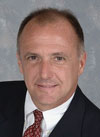 John Remsen, The Remsen Group, Atlanta: You have to find ways to measure and reward business development activities, or they don’t get done.
John Remsen, The Remsen Group, Atlanta: You have to find ways to measure and reward business development activities, or they don’t get done.
“In terms of improving yourself and your firm, and even surviving, that’s where you get the most valuable information,” Denney says.
And yet Denney and other observers in the legal profession say firms rarely bother with client feedback. “It’s a nonbillable exercise,” says John Remsen of The Remsen Group, a law firm marketing consulting firm in Atlanta. “And if it isn’t billable, it doesn’t get done. That’s sad.”
Nerino Petro, State Bar practice management advisor, agrees that any firm of any size ought to obtain client feedback. “It doesn’t have to be a complex process,” he says. “It can be as simple as a one-sentence survey question: Would you recommend our services to an acquaintance? Or did we meet your needs?”
Small and solo firms, in particular, may contend that they simply don’t have time to fit yet another activity into their workday. “The answer to that,” Denney advises, “is that you don’t have time to fail.”
Social Media
As Petro sees it, the jury is still out on whether using social media brings an actual return to law firms. Still, he sees it as part of a broader marketing strategy. “Know what you want to accomplish with social media,” he advises, “and then track the results.” He agrees with the Denney report that Twitter and LinkedIn are the most productive venues for lawyers.
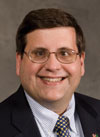 Nerino Petro Jr., State Bar practice management advisor, Madison: Know what you want to accomplish with social media, and then track the results.
Nerino Petro Jr., State Bar practice management advisor, Madison: Know what you want to accomplish with social media, and then track the results.
Remsen also believes social media have a place in law firm marketing. But he warns about pitfalls. Posting something on Twitter or a blog can be a quick and easy way to connect with clients and potential clients. “But in my opinion, nothing replaces face time,” he says. “Social media should be a supplement to face time, not a replacement for it.”
Business Development Versus Marketing
More firms are putting emphasis on business development and cross-marketing to build relationships with current clients, rather than traditional marketing, states the Denney report.
Petro says the business development approach makes sense for some firms and practice areas. It goes back to the 80/20 rule, he says: 80 percent of your work comes from 20 percent of your clients. “So generally it’s easier to market to existing clients and let them know you do other areas of practice,” Petro says, “rather than trying to obtain a brand new client.”
Remsen does most of his consulting work with commercial law firms, and he sees a definite shift toward business development strategies. Business development relies on building relationships, while he sees regular marketing as mostly a “check-writing exercise” to pay for ads, sponsorships, and so on.
The key is to invest in “meaningful business development activities, not random acts of lunch and golf,” Remsen suggests. He advises firms to set expectations for how much time each lawyer will devote to business development. Each attorney should have an individual marketing plan spelling out what activities he or she will engage in over a set period and with whom. “Then track that, measure it, and reward a job well done,” Remsen says.
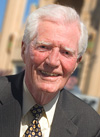 Robert Denney, Robert Denney Associates, Wayne, Pa.: To improve yourself and your firm, and to survive, lawyers must find out what clients think of them. That’s where you get the most valuable information.
Robert Denney, Robert Denney Associates, Wayne, Pa.: To improve yourself and your firm, and to survive, lawyers must find out what clients think of them. That’s where you get the most valuable information.
Bear in mind that you may be rewarding effort, not necessarily results, he says. Young lawyers, in particular, may not see results in terms of bringing in new business until years later. Building relationships takes time. But if an attorney meets the expectations laid out in the individual plan, then he or she ought to be rewarded. Factor it right into the attorney’s overall compensation package, Remsen advises.
“Firms are reluctant to do that,” he says, “because they’re all about billable hours and dollars brought in. But I say if you want your people to do more than work files, you need to create an expectation. You have to find ways to measure and reward business development activities, or they don’t get done.”
Other Trends and Issues
Here are a few of the additional trends and issues cited in the Denney report. See the full report for more.
Nonlawyer Competition
Denney urges lawyers to accept the reality that nonlawyer competition is on the rise. The Denney report mentions, for instance, the new Washington State Supreme Court rule creating nonlawyer legal technicians. Other similar initiatives are under way in other states. Nonlawyers can handle matters lawyers don’t need to do or have time to do, Denney says, adding, “Lawyers should focus on the things nonlawyers cannot do.”
Nontraditional legal service providers, such as LegalZoom and Rocket Lawyer, also are having an impact, Petro points out. “Lawyers are losing some of our ability to control the legal marketplace,” he says. “I think rather than fighting a rear-guard action that we’re going to lose, we need to leverage this situation to our advantage.”
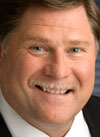 Alan Olson, Altman Weil, Milwaukee: Even in high-risk/high-reward litigation cases and complex transactions, legal clients are increasingly price-sensitive.
Alan Olson, Altman Weil, Milwaukee: Even in high-risk/high-reward litigation cases and complex transactions, legal clients are increasingly price-sensitive.
Smaller Firms Claim Bigger Piece of the Pie
The Denney report points out that according to the Wall Street Journal, mid-size firms are getting 41 percent of big-ticket litigation, compared to just 22 percent three years ago. Factors driving this trend, the Denney report states, include the migration of big-firm attorneys to smaller firms, lower pricing, and more attentiveness to clients’ needs.
Alan Olson of the Milwaukee office of Altman Weil, a legal consulting firm, also sees this shift taking hold. Legal clients – even in high-risk/high-reward litigation cases and complex transactions – are increasingly price-sensitive, he says. Plus, they’re looking for law firms that can be more responsive.
“Will lawyers be available to clients to answer their one-off questions? Will there be trust? In my view, the more things change, the more they stay the same. Trust in the relationship is still one of the prime differentiators,” Olson says.
Hourly Rates and Alternative Fee Arrangements
Many firms are raising their hourly rates, just as they did last year, Denney reports. At the same time, they’re offering discounts to their clients. “It’s kind of a silly game,” he observes. He suggests a smarter move would be to refrain from raising rates in the first place, given today’s price competition.
In 2013, 95.6 percent of law firm leaders said that price competition was a permanent trend in the legal profession, according to the 2013 Altman Weil Law Firms in Transition survey. Olson says that figure was only approximately 40 percent in 2009.
 Amber Schreier, Robert Half Legal, Minneapolis: Smaller firms are getting busier, so they’re hiring, which is creating opportunities for new lawyers.
Amber Schreier, Robert Half Legal, Minneapolis: Smaller firms are getting busier, so they’re hiring, which is creating opportunities for new lawyers.
Also, 84 percent of lawyers surveyed in 2013 said they expect to see more commodization of legal services, compared to just 26 percent who held that view in 2009.
Meanwhile, the move away from hourly billing has “been sporadic and glacial overall,” Olson observes. Still, as the survey numbers indicate, most lawyers have taken note of the changes occurring in the pricing environment.
“The big issue,” Olson says, “is what actions will that trigger? How will law firms respond? My threshold recommendation is that they need to do a new level of blank-sheet-of-paper planning, in light of the intensified segmentation of the legal marketplace, and the more pronounced differences among practice areas and even within some legal specialties. Increasingly, you have very different business areas within the same firm.”
Hiring
New law school graduates continue to face a tough job market, a situation exacerbated by the number of practicing lawyers who have been pushed out of or chosen to exit large firms, according to the Denney report.
Dianne Molvig is a frequent contributor to area and national publications.
While the job market for entry-level lawyers is still tough, it is improving, observes Amber Schreier, Midwest regional vice president in the Minneapolis office of Robert Half Legal, a legal staffing agency based in Menlo Park, Calif. “It’s gotten better every year since the recession,” she says. “That ties in to the fact that smaller firms are getting a bigger piece of the pie. They’re getting busier, so they’re hiring, which is creating opportunities for new lawyers.”
As for attorneys already in practice, Schreier says job prospects are strong for those with at least two years of substantive experience, primarily in the hot practice areas the Denney report mentions. Those lawyers have opportunities to make lateral moves or go in-house, she says.
“Overall, hiring in the legal community is strong,” Schreier says, “and salaries are going up. That’s true in the Midwest, too.”
